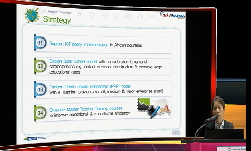The purpose of this study is to provide an account of teacher perception of core practice tasks in data use, particularly data interpretation. Data interpretation is critical to professional practice in planning instructional adjustments for student ...
http://chineseinput.net/에서 pinyin(병음)방식으로 중국어를 변환할 수 있습니다.
변환된 중국어를 복사하여 사용하시면 됩니다.
- 中文 을 입력하시려면 zhongwen을 입력하시고 space를누르시면됩니다.
- 北京 을 입력하시려면 beijing을 입력하시고 space를 누르시면 됩니다.
https://www.riss.kr/link?id=T13136146
- 저자
-
발행사항
[S.l.]: The University of Wisconsin - Madison 2012
-
학위수여대학
The University of Wisconsin - Madison Curriculum & Instruction
-
수여연도
2012
-
작성언어
영어
- 주제어
-
학위
Ph.D.
-
페이지수
149 p.
-
지도교수/심사위원
Adviser: Michael K. Thomas.
-
0
상세조회 -
0
다운로드
소속기관이 구독 중이 아닌 경우 오후 4시부터 익일 오전 9시까지 원문보기가 가능합니다.
부가정보
다국어 초록 (Multilingual Abstract)
The purpose of this study is to provide an account of teacher perception of core practice tasks in data use, particularly data interpretation. Data interpretation is critical to professional practice in planning instructional adjustments for student learning. This is a case study of four elementary teachers who provide numerous task-specific examples of data use. The findings yield a 3-phase model of tasks that support data interpretation. Phase 1 (Observation) entails collecting critical skill data from various sources and analyzing data using familiar frameworks such as standards-based criteria for core subjects. Phase 2 (Interpretation) is comprised of three core tasks: comparing scores to predetermined target ranges, contemplating student connections to curriculum, and integrating student-based information if/when students fall short of achievement targets. Phase 3 (Adjustment) involves reinforcing student learning and referring students for specialized services when warranted. Variable practices in this data use model are attributed to teacher perceptions of successful or unsuccessful students. Discussion encompasses study implications, connections to existing literature, study limitations, and extended research recommendations.
분석정보
연관 공개강의(KOCW)
-

Education Policy at the Party Conferences
Teachers TV Teachers TV -

2014 이러닝 국제 콘퍼런스 : What is the Lessons from Education Support Project~
한국교육정보진흥협회 Boseon, Kim -

Personal Finance Education: The Money Quiz
Teachers TV Teachers TV -

Further Education: Work Experience
Teachers TV Teachers TV -

Alcohol Education: Here's What We Want
Teachers TV Teachers TV






